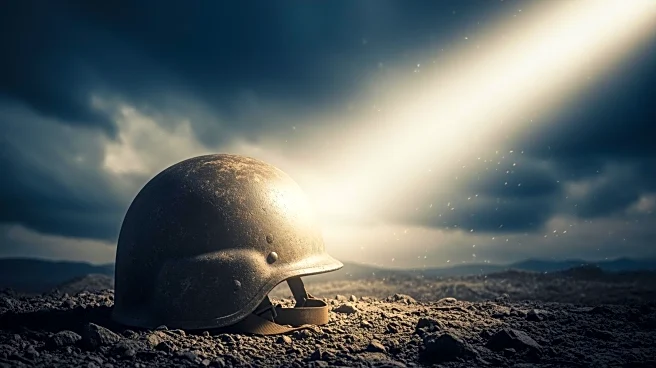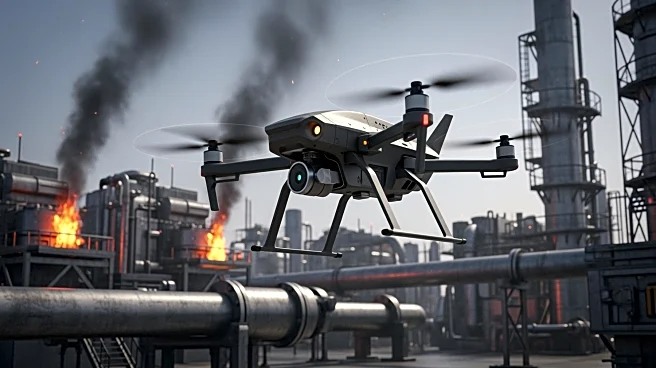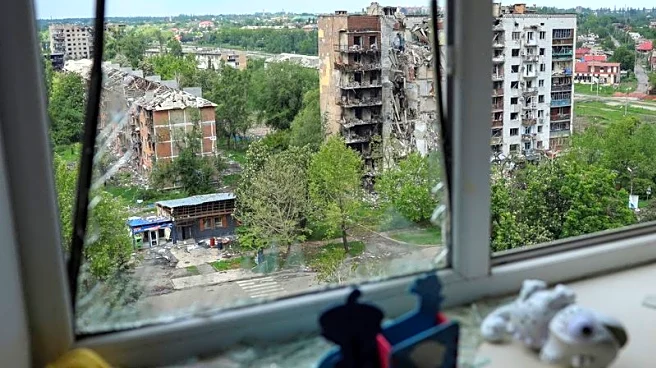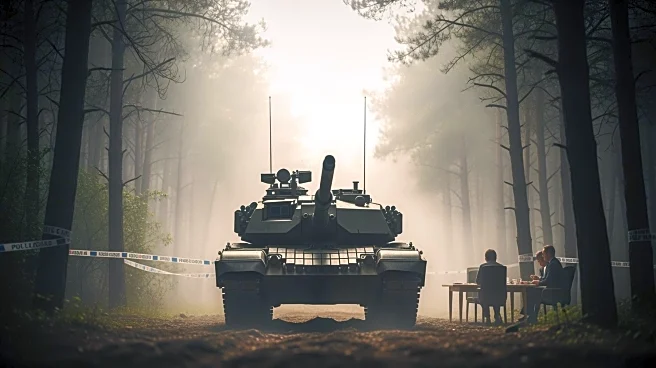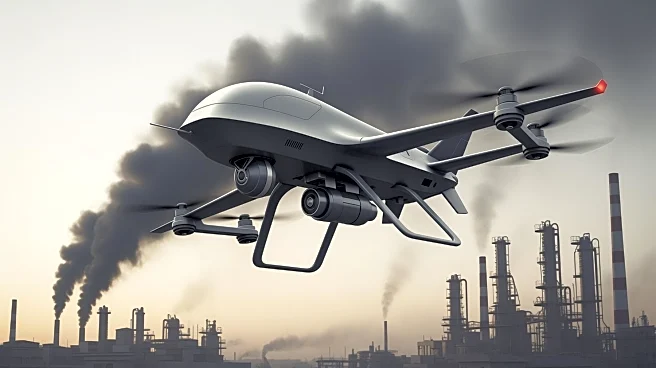What's Happening?
Russian forces are advancing on the eastern Ukrainian city of Pokrovsk, a key road and rail junction in the Donetsk region. The battle for Pokrovsk has been ongoing for over a year, with Russia amassing
tens of thousands of troops in the area. Ukrainian forces are reportedly outnumbered, and more than 1,000 soldiers are at risk of encirclement. Despite claims of Russian infiltration, Ukraine maintains active resistance, with the Skelya regiment recently raising the national flag over the city council building. The fall of Pokrovsk would allow Russian forces to advance towards the Dnipropetrovsk region, potentially impacting other contested areas like Pavlohrad, Dnipro, and Zaporizhzhia.
Why It's Important?
Pokrovsk's strategic importance lies in its role as a major transportation hub, facilitating movement towards central Ukraine. Its capture would bring President Putin closer to his goal of controlling the Donbas region, which includes Donetsk and Luhansk. The city is also near Ukraine's only coking coal mine, vital for the steel industry, although production has ceased due to evacuations. The fall of Pokrovsk could shift the balance in the ongoing conflict, enabling Russian forces to target other key cities in the region, thereby altering the dynamics of the war.
What's Next?
If Pokrovsk falls, defending nearby cities like Myrnohrad and Kostyantynivka becomes challenging for Ukraine. Russian forces could then focus on the 'fortress belt' cities of Druzhkivka, Kramatorsk, and Slovyansk. However, Ukraine has defensive lines to fall back on, potentially resetting its defense strategy. Analysts suggest that Russia's current tactics may not lead to significant breakthroughs, indicating a prolonged conflict. The Institute for the Study of War believes Russia lacks the capability for rapid advances, suggesting a continued stalemate in the region.
Beyond the Headlines
The battle for Pokrovsk highlights the broader geopolitical struggle between Russia and Ukraine, with implications for regional stability and international relations. The conflict underscores the challenges of territorial control and the human cost of war, as cities become battlegrounds and populations are displaced. The situation also raises questions about the effectiveness of military strategies and the potential for diplomatic resolutions.


